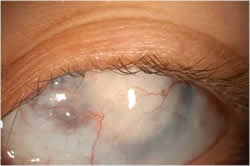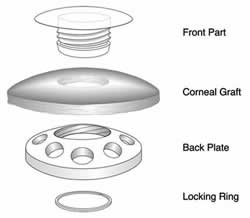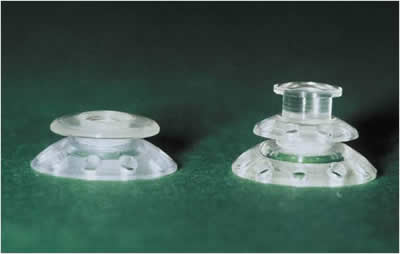
The Boston Keratoprosthesis was introduced by Dr. Claes Dohlman in the 1960s and has become increasingly refined over the years. This type of corneal transplant uses an artificial cornea (made of plastic) to replace the natural, defective cornea tissue. Typically, this form of corneal transplant is reserved for individuals at high risk for rejection of a traditional corneal transplant, such as patients who have a history of two or more failed full thickness corneal transplants or patients with a large number of blood vessels that have grown into the cornea.

Boston Keratoprosthesis PreOpDuring a Boston Keratoprosthesis corneal transplant the clear, plastic, artificial cornea is inserted into a donor corneal graft and then sutured into place (in a fashion similar to a traditional full thickness corneal transplant). A contact lens is then oriented over the artificial cornea to protect the cornea and to aid in corneal tissue hydration. Patients at high risk of traditional graft rejection may benefit from the Boston Keratoprosthesis because there is no risk of rejecting the artificial cornea. Boston Keratoprosthesis Post OpPatients who undergo a Boston Keratoprosthesis remain on a prophylactic long term antibiotic eye drop regimen to decrease the risk of infection.

Studies suggest that the Boston Keratoprosthesis has outstanding long-term stability and safety. Additionally, the Boston Keratoprosthesis demonstrates excellent optics. In fact, many patients can perceive an improvement in the vision as soon as the first day after surgery, representing a much faster visual recovery than anticipated after a traditional corneal transplant. However, a keratoprosthesis is not for everybody. The decision as to which type of transplant is best for a given individual depends on numerous factors that will be reviewed as part of a comprehensive evaluation at our office.



